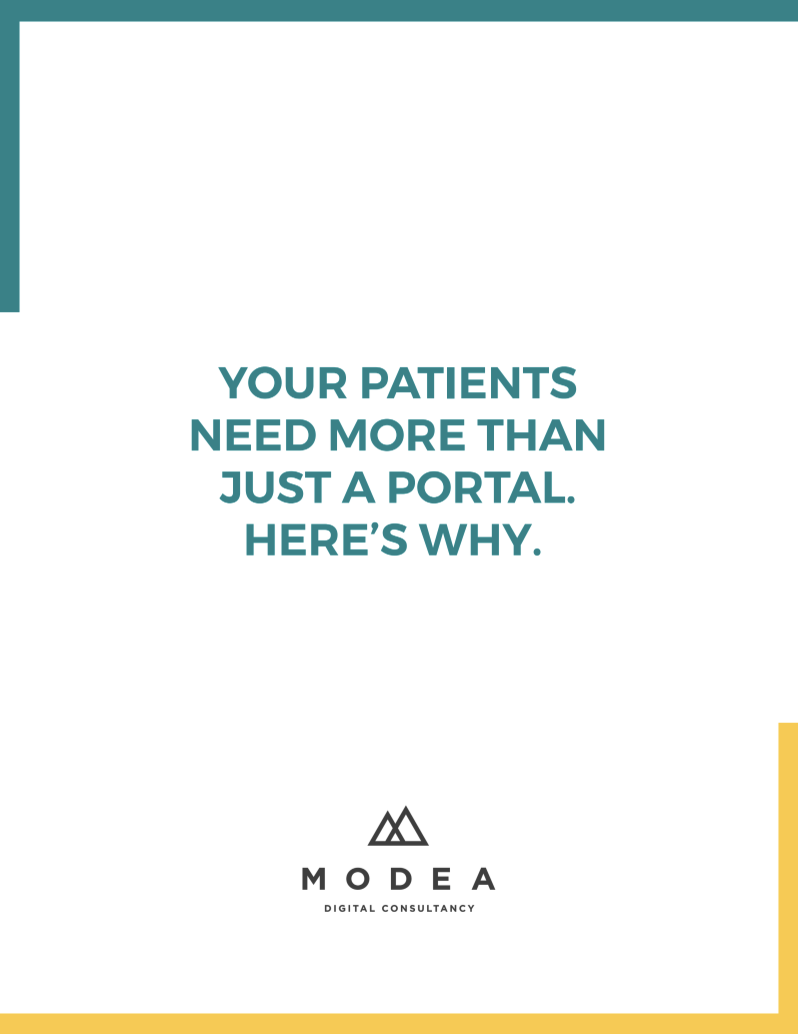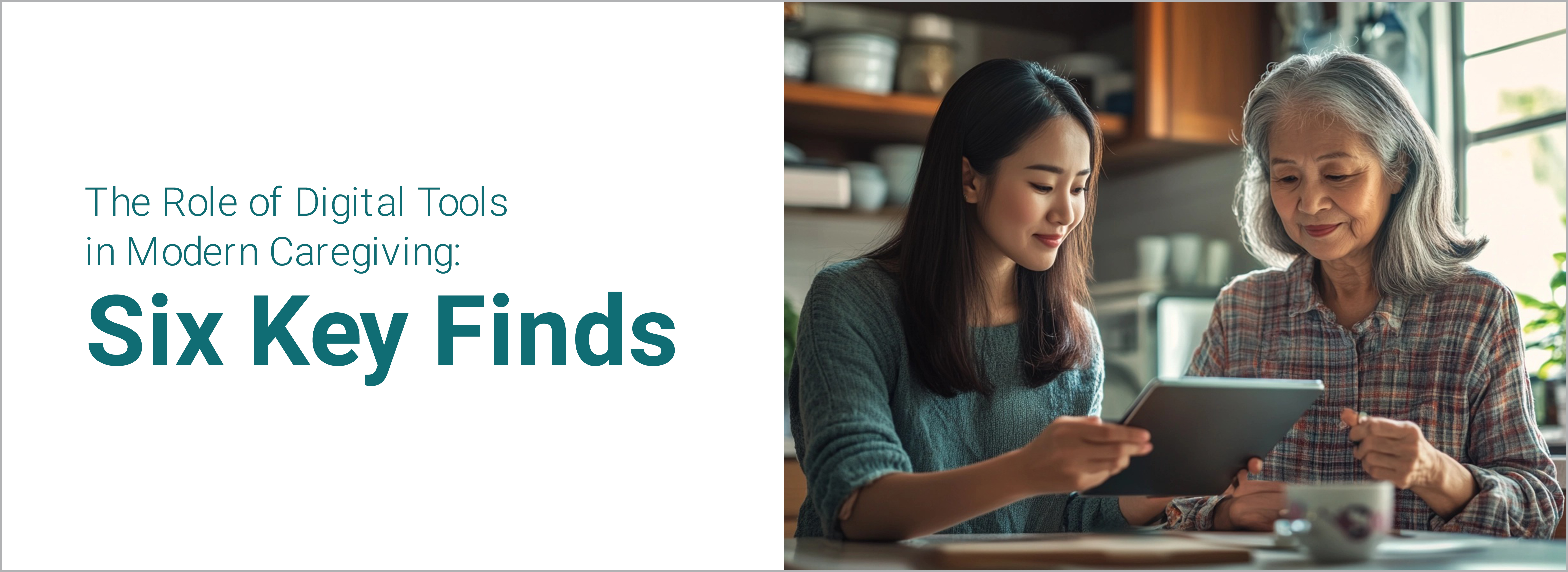
Caregiving is an increasingly recognized role in modern society, with more people supporting loved ones, and clients in need of healthcare. Caregivers are crucial to their well-being, and, in addition, often find themselves balancing these duties with their personal and professional lives. Recognizing the importance of this role, our team recently conducted a survey to better understand the experiences and challenges faced by these individuals.
Digital tools are essential for caregivers, helping them manage tasks like booking appointments, medication tracking, and communicating with healthcare providers. While these tools are typically designed to assist those receiving care, caregivers often use them as well. The question is: Are these tools helping or adding to their frustrations?
In this blog, we explore six key insights gathered from the experiences of caregivers on their interactions with digital tools.
Defining Caregivers
We categorized the respondents into four age groups (18-29, 30-44, 45-60, and over 60). Nearly half of these caregivers have been in the role for one to five years. This indicates that while many are relatively new, they have already developed significant caregiving expertise.
Interestingly, over half of the respondents work full-time while also handling caregiving duties. Despite these demands, many manage to dedicate 5-20 hours a week to caregiving, showcasing their commitment and time management. This balance highlights the challenges of juggling work and providing care and the potential for digital tools to help. It also underscores the need for flexible workplace policies and supportive resources. These measures help caregivers manage both caregiving and work without excessive stress or burnout.
With that in mind, here are our key findings we obtained from our recent survey of caregivers across the US.
Six Key Insights About Digital Tools for Caregivers
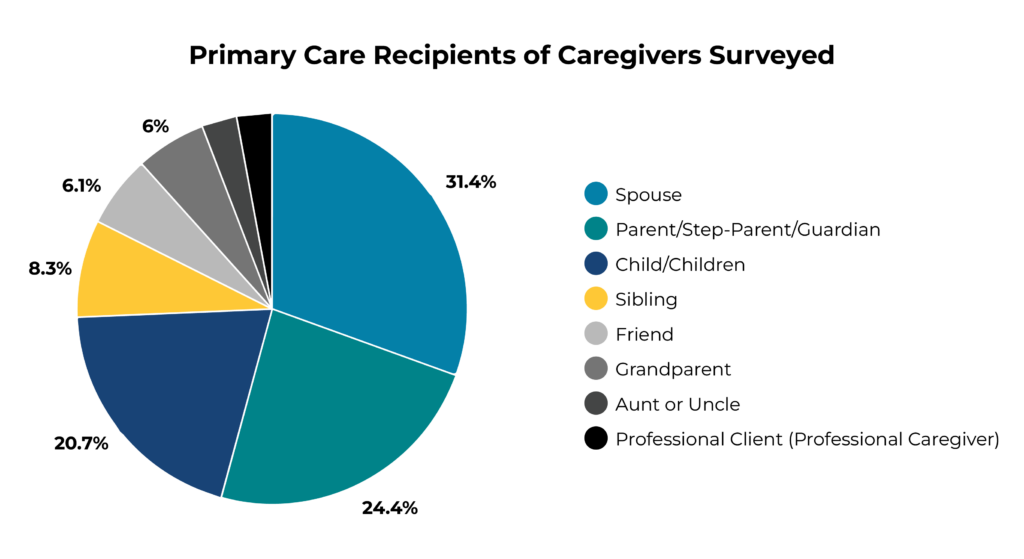
1. The broad caregiver demographic illustrates the range of scenarios, each with unique challenges and demands. Digital tools need to be accessible, adaptable, and user-friendly to aid caregivers of all ages in their multifaceted roles.
The caregivers we surveyed primarily provide care to spouses, children, and parents. Our survey reveals that 31.4% of respondents primarily care for spouses. This percentage increases among older respondents, emphasizing the crucial role of spousal caregiving in sustaining partners’ health and well-being.
24.4% of respondents support parents or step-parents, showcasing the increasing trend of adult children being placed in roles to assist their aging relatives.
Amongst caregivers aged 30-44, 27.5% are caring for children. Then, as respondents age, their caregiving focus begins to shift towards spouses and parents. This underscores the dual responsibilities many caregivers face. They must balance the needs of both young dependents and aging parents.
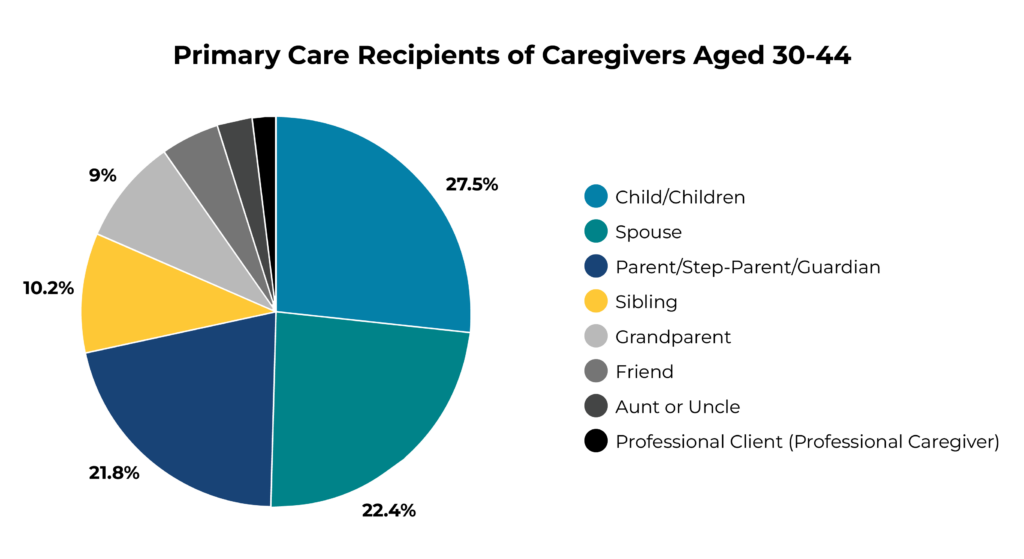
2. By addressing specific frustrations and ways to improve common caregiving tasks via digital platforms, healthcare organizations can better support caregivers, ensuring they have the necessary tools to provide care effectively and efficiently.
Caregivers rely heavily on digital tools for a variety of tasks. The overall top three common tasks for respondents cited are: arranging medical appointments (46%), ordering medication and medical supplies (43.7%), and communicating with healthcare providers (40.4%). These tasks are essential for providing comprehensive care and managing the day-to-day responsibilities that come with caregiving.
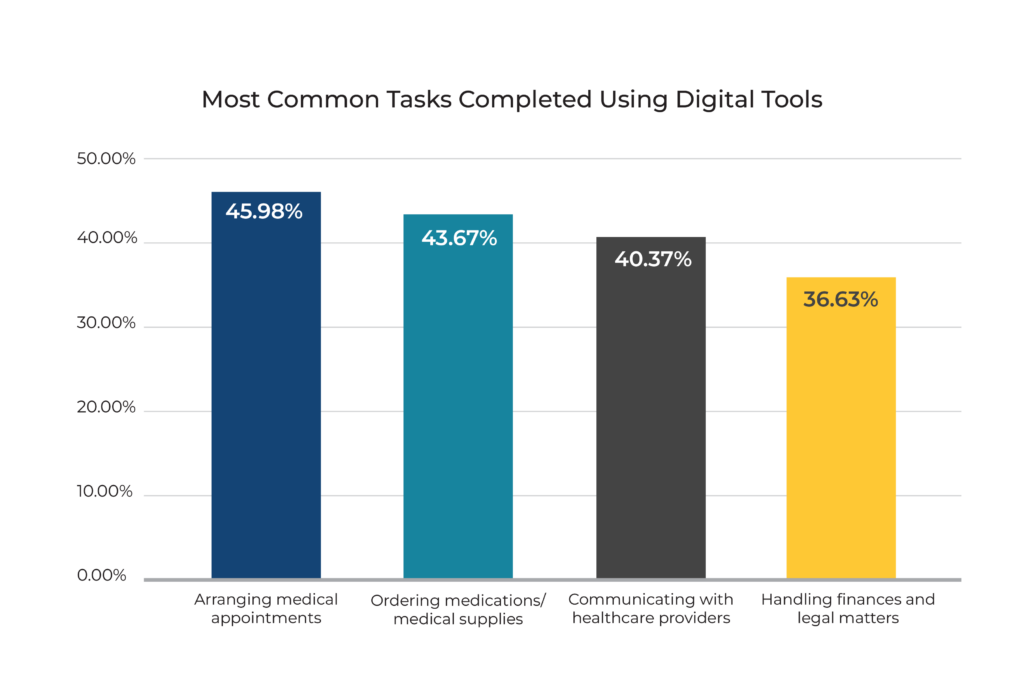
Despite the high usage of digital tools for these tasks, these caregivers also express frustrations, particularly in communicating with healthcare providers (40.3%), handling finances and legal matters (35.8%), and arranging medical appointments (29.2%). Arranging medical appointments is a common and frustrating task, highlighting a clear area for improvement.
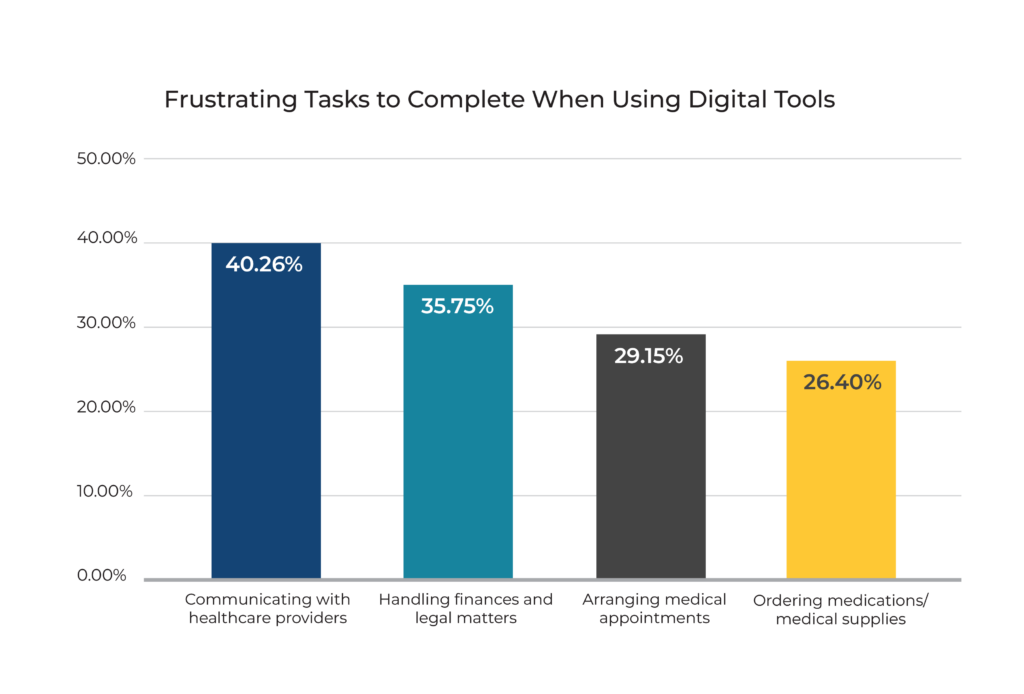
Caregivers want improvements to digital tools that address their frustrations and streamline their responsibilities. The most requested improvements include a note-taking tool to conveniently jot down care notes (42%), medication reminder alerts to help track dosages (42%), and a calendar tool to easily schedule and view appointments (39%). These enhancements would improve efficiency and reduce the stress of managing multiple caregiving tasks.
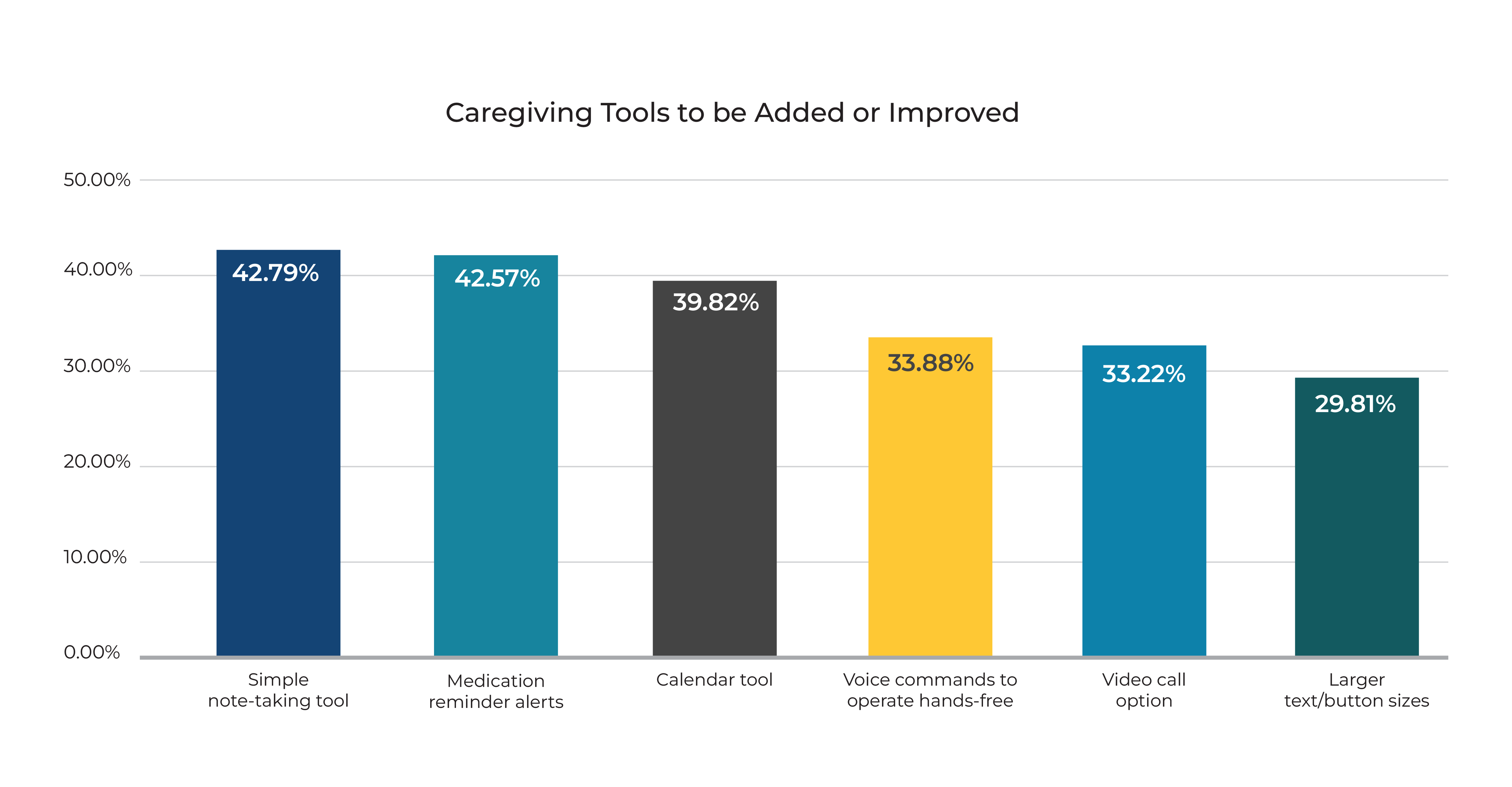
3. Provider organizations should invest in developing accessible training programs to ensure caregivers can effectively use digital tools and have the skills and readiness needed to digitally manage care.
Training and support for digital tools are crucial for effective use. Younger caregivers generally find digital tools more beneficial due to their familiarity, while older caregivers often struggle without adequate training.
In fact, 57.4% of caregivers aged 45-60 are highly satisfied with the training provided by healthcare organizations, but that drops to 30.3% among those over 60. This highlights the need for tailored, user-friendly training programs to help all caregivers confidently use digital tools.
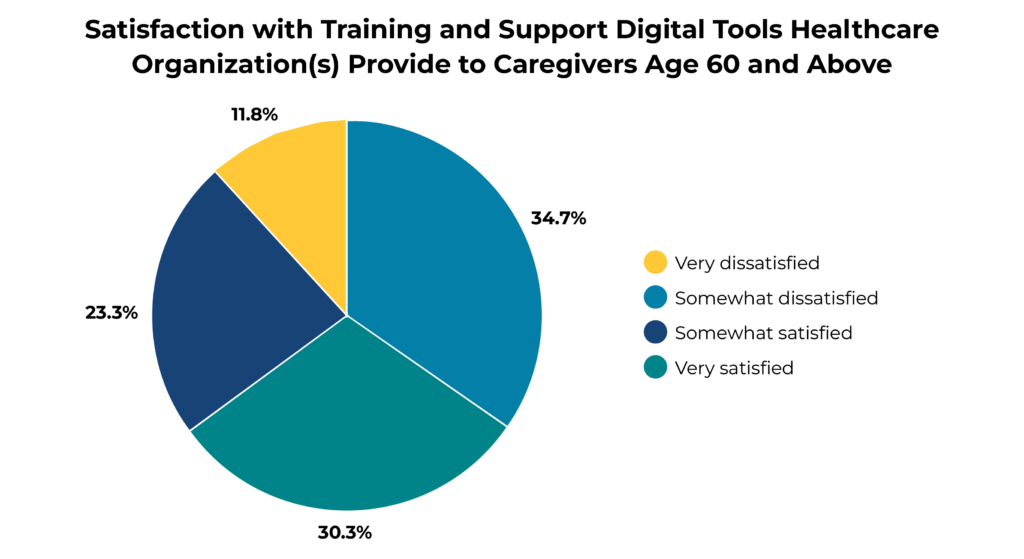
4. Digital tools should prioritize a mobile-first approach to enhance usability and efficiency, ensuring caregivers can provide optimal care with ease and accessibility.
Smartphones are essential tools for caregivers, with 48.2% of respondents using them daily for caregiving tasks. Computers and laptops are also essential, with 28.8% of respondents using them daily, so health organizations shouldn’t ignore the importance of desktop access in the caregiver digital experience. To effectively serve diverse caregivers, mobile-friendly digital tools must be regularly updated and optimized for all devices. Still,
5. Digital tool usage patterns vary greatly across different age groups, indicating a need for targeted support, education, and research to improve the digital experience for all caregivers.
Device usage among caregivers varies by age, but caregivers aged 45-60 are the most frequent users of digital tools, with nearly half (47.2%) relying on them daily. Their daily use of these devices helps them stay organized by managing appointments (19.5%), tracking medications (16.8%), and communicating with healthcare providers (16.8%). This makes them adept at navigating the complexities of caregiving. Within this age group, 36.7% are caring for a spouse, followed by 26.1% caring for a parent, step-parent, or guardian.
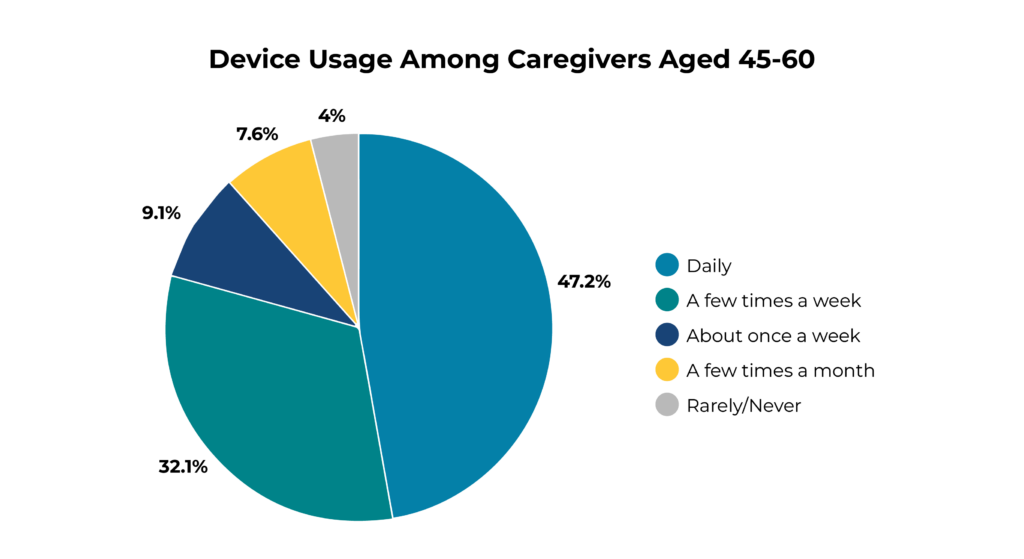
Comparatively, caregivers aged 30-44, the second most frequent users of digital tools, have 43.6% using them daily, primarily for caring for children (27.5%), often paying medical bills (16.3%), arranging medical appointments (15.6%), and ordering medications/supplies (13.7%).
While older caregivers (60 and above) are comparable to caregivers aged 45-60 in the type of devices they use, those over 60 use these tools less frequently, with 31.3% using these tools a few times a week, and only 28.6% using them daily, potentially due to less familiarity and reliance on analog experiences.
Meanwhile, the younger generation (ages 18-29), shows 40.8% of daily use focusing on paying medical bills (14.6%), communicating with healthcare providers (14.2%), and maintaining personal health records (11.5%).
6. Age- and income-related differences in perception of tool security show the need for reassurance across all groups to ensure confidence in digital caregiving tool security.

With increasing healthcare data breaches, digital tool security is a top concern for caregivers and organizations. Caregivers aged 45-60 feel the most secure (53.9%), likely due to their familiarity with technology. However, caregivers aged 30-44, while highly familiar with technology, are still concerned about data breaches and privacy (23%). This age group, who are most likely to care for children (27.5%) may be more concerned with security and privacy given the higher stakes involved in protecting minors. Caregivers aged 60 and older are cautious about digital security, potentially due to a lack of trust.
When it comes to income levels and perceptions of security, those earning more than $100k per year felt extremely secure (51%), while those below the $100k income threshold were more likely to feel only somewhat secure (49.3%). Only 24.7% of those below the $100k threshold said they felt extremely secure.
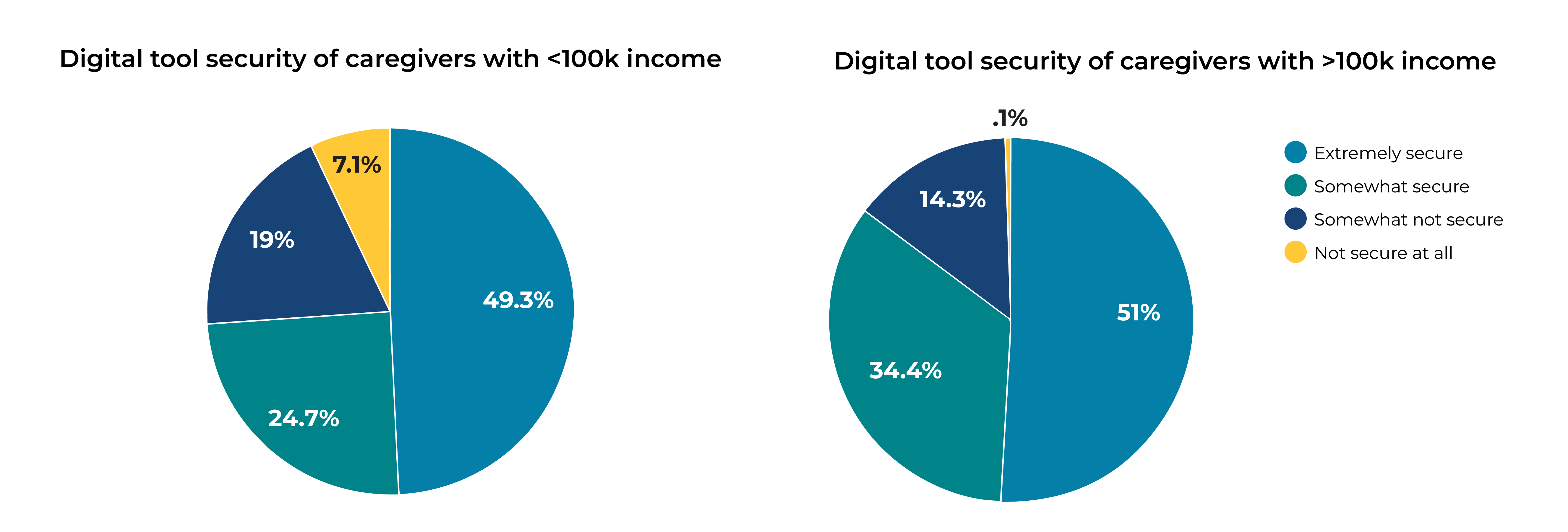
In Conclusion
Our research highlights the importance of digital caregiving tools and differences across age and income. Addressing the challenges faced by older and lower-income caregivers can make these tools more effective and inclusive. Prioritizing digital security, user-centered design, and enhanced training is essential to improving the caregiving experience. Refining digital tools to meet caregivers’ needs will enhance their experience and improve care outcomes.



